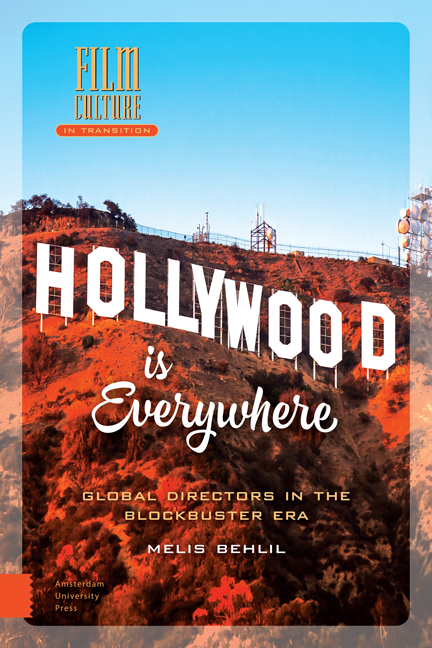Book contents
- Frontmatter
- Dedication
- Contents
- Acknowledgments
- Introduction: Hello Hollywood
- 1 Defining Hollywood
- 2 Cultural Work in a Globalizing World
- 3 Histories and Geographies of Global Directors
- 4 A View to a Franchise: James Bond
- 5 “Once More with the Volume Up”: Auto-remakes
- 6 I Want My MTV: Advertising and Music Videos
- 7 Conclusion: “Everywhere is Hollywood”
- Notes
- Bibliography
- List of Directors
- Index of Film Titles
- Index of Names
- Index of Subjects
- Film Culture in Transition
4 - A View to a Franchise: James Bond
Published online by Cambridge University Press: 10 December 2020
- Frontmatter
- Dedication
- Contents
- Acknowledgments
- Introduction: Hello Hollywood
- 1 Defining Hollywood
- 2 Cultural Work in a Globalizing World
- 3 Histories and Geographies of Global Directors
- 4 A View to a Franchise: James Bond
- 5 “Once More with the Volume Up”: Auto-remakes
- 6 I Want My MTV: Advertising and Music Videos
- 7 Conclusion: “Everywhere is Hollywood”
- Notes
- Bibliography
- List of Directors
- Index of Film Titles
- Index of Names
- Index of Subjects
- Film Culture in Transition
Summary
In CASINO ROYALE (Martin Campbell, 2006), the first film in the Bond franchise to star Daniel Craig, there is a peculiar series of events early in the film; a chase sequence, in which Bond follows a suspected terrorist through construction sites in Madagascar, ends at the Nambutu Embassy. While this is not out of the ordinary, throughout the scenes at the embassy of this imaginary African country the use of security cameras and screens is highlighted, much more so than in any earlier Bond film. At the end of the sequence, as Bond shoots the suspect and blows up the embassy, his actions are all distinctly recorded on one of the security cameras. The audience soon finds out that the man was indeed a terrorist bomb-maker, which is meant to justify Bond's actions to some extent. Nonetheless, it is the information age and the rules have changed; in the following scenes, Bond's actions, along with the security camera footage, are reported on news sites and newspapers, read by Bond's nemesis Le Chiffre, and his boss M. The new Bond, played by a new actor, is as susceptible to global information networks as any other citizen in the world.
Sony Corporation, which was responsible for CASINO ROYALE, is itself embedded in transnational networks on various levels. Originally an electronics firm, Sony was founded in Japan in 1946. It has since entered the music, film, and video games businesses, as well as finance and biotech. With offices in almost 40 countries and regions, Sony is truly a transnational corporation. As the parent company of Sony Pictures Entertainment, Sony is a major player in Hollywood. It purchased Columbia Pictures and Tristar Pictures in 1989 to benefit from potential synergies between hardware and software. Sony also acquired MGM and its subsidiary United Artists, which traditionally produced the Bond films, in 2005. Although Sony no longer owns MGM, in 2011 it entered a partnership with MGM in order to co-finance and distribute the films in the franchise. The franchise has consistently been a great source of profit, but for Sony, the benefits of Bond go beyond the box office or even home market sales.
- Type
- Chapter
- Information
- Hollywood is EverywhereGlobal Directors in the Blockbuster Era, pp. 81 - 96Publisher: Amsterdam University PressPrint publication year: 2016



